Views from a dronepublished at 11:21 BST 24 April 2015
BBC Trending
tweets, external: #Gallipoli100: Check out this drone video of the WWI battlefield https://www.youtube.com/watch?v=GiysBodQYgg&feature=youtu.be, external
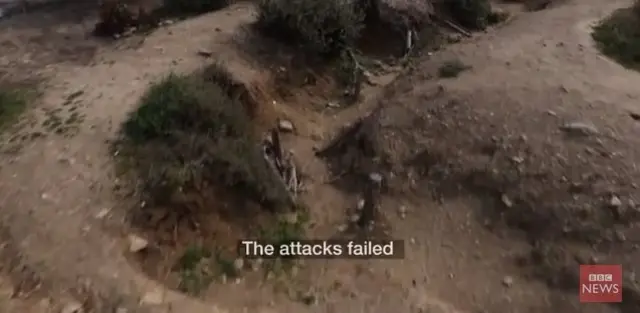
Events mark the 100th anniversary of the Gallipoli campaign, one of the bloodiest in World War One
Allied forces landed on the beaches of the Gallipoli peninsula in modern-day Turkey in April 1915
Allied forces were locked in an eight-month stalemate with Ottoman troops before pulling out in January 1916
An estimated 131,000 soldiers on both sides of the conflict died during the doomed campaign
It was the first campaign that led to major casualties for Australian and New Zealand forces during the war
Leaders of Australia, New Zealand and Turkey, and Princes Charles and Harry, are among those attending remembrance services
Stephen Robb, Henrietta McMicking, Claire Bates and Jastinder Khera
BBC Trending
tweets, external: #Gallipoli100: Check out this drone video of the WWI battlefield https://www.youtube.com/watch?v=GiysBodQYgg&feature=youtu.be, external

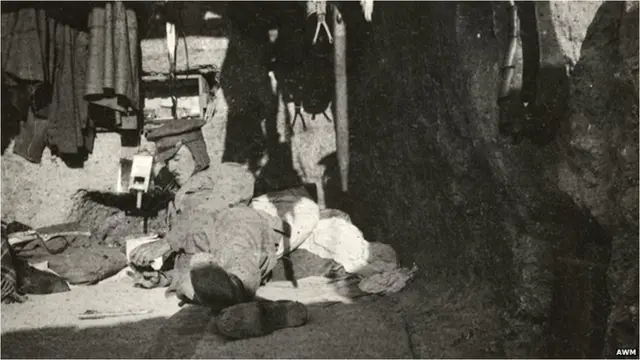 Image source, AWM
Image source, AWMAustralian Sgt Maj Dowsett rests in a dug-out
Allied forces were unable to advance far inland due to the difficult terrain and Turkish resistance. Instead, they dug trenches in to the cliffs.
Men "lived as completely enclosed as in the lanes of a city, having their habitations along them in niches undercut in the wall, sometimes curtained by hanging blankets or waterproof sheets", wrote war correspondent Charles Bean, external in his book, The Story of Anzac.
Connie Toth in Wellington, New Zealand, emails: A very symbolic piece of art, and a fitting tribute for the 100 year Gallipoli commemorations.
The image is taken on 24.4.15 from the diving platform behind the Museum of New Zealand Te Papa Tongerewa.
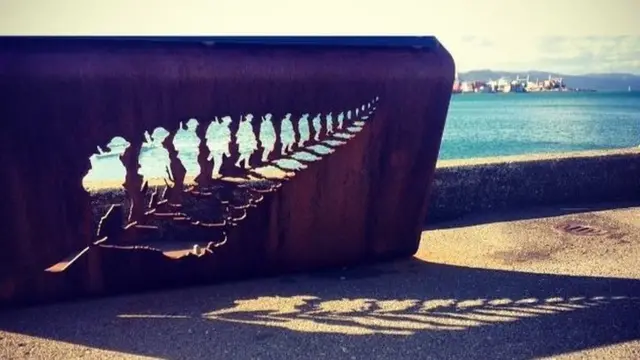 Image source, Connie Toth
Image source, Connie Toth Fergal Keane
Fergal Keane
BBC foreign correspondent
tweets, external: #Gallipoli100 A soldier remembered at Cape Helles today
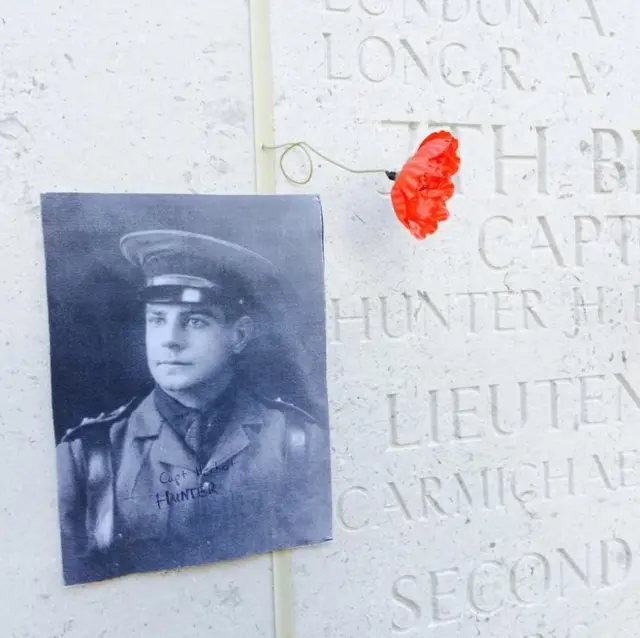

The Prince of Wales and Prince Harry have met relatives of veterans of the Gallipoli campaign on the flight deck of the Royal Navy's flagship HMS Bulwark in Turkey's Dardanelles straits.
The royal party met 15 descendants of veterans who had been selected to join the commemorations.
Ben Goddard, 37, was there to honour his great-grandfather Pte Alfred William Goddard, of 2nd Hampshire Regiment, who landed on V Beach on 25 April 1915. He was hit on the elbow by shrapnel 11 days later, but survived the hostilities.
Mr Goddard, from Ropley, Hampshire, knew nothing about the Gallipoli campaign until he researched his family tree and found out about his ancestor's war record.
"So many men fought and did not come back. That should be remembered, whether the campaign was a disaster or not," he said.
Mark Lowen
BBC Turkey correspondent
tweets, external: #PrinceCharles stopping on #HMSBulwark, meeting descendants of #Gallipoli before giving readings at memorials
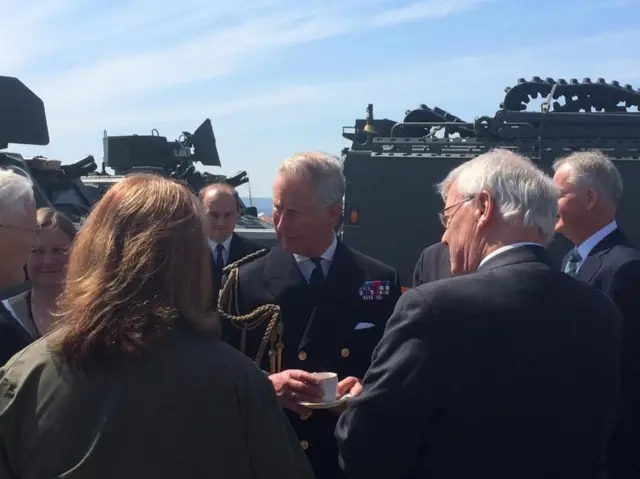
Lucy Hockings
BBC News correspondent
tweets, external: NZ PM @johnkeypm lays a poppy on the grave of a 17yr old soldier at Chunuk Bair. "A sacred place" #Gallipoli100

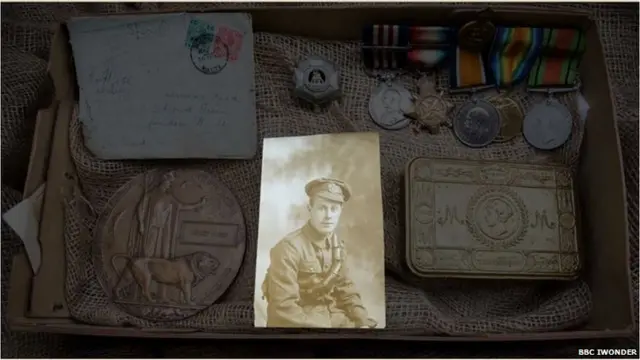 Image source, BBC iWonder
Image source, BBC iWonderSome of the common WW1 items you may have
Nearly one million men from across the globe fought at Gallipoli, while 17 million took part in World War One as a whole.
Photos, cap badges and war diaries can all help you to build up a picture of what your own relations did during the conflict.
Mark Lowen
BBC Turkey correspondent
tweets, external: #PrinceHarry meeting descendants of #Gallipoli on #HMSBulwark. Hearing stories of death and heroism

 Phil Mackie
Phil Mackie
BBC News correspondent
tweets, external: Lyn Edmonds who will lay a wreath at Helles later at V beach & her grandfather Pte Benjamin Hurt #Gallipoli100
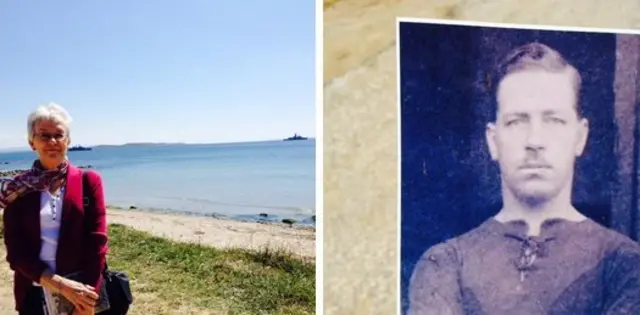 Image source, @philmackie
Image source, @philmackie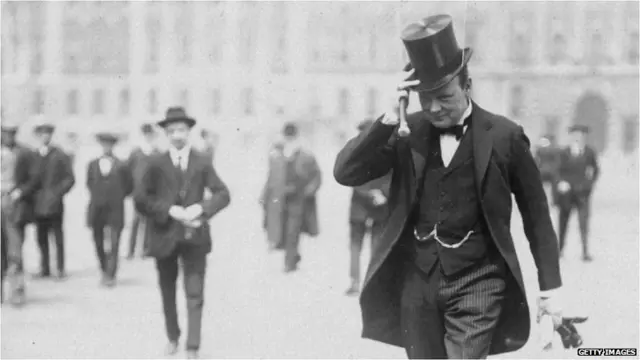 Image source, Getty Images
Image source, Getty ImagesWinston Churchill in 1915
In World War One, the Allies had reached a stalemate on the Western Front by September 1914. A month later the Ottoman Empire formally joined the Central Powers, led by Germany, when it bombed Russian seaports.
Winston Churchill, then First Lord of the Admiralty, planned to knock the Ottomans out of the war by attacking the capital Constantinople.
The navy first had to force open a route along the Dardanelles by the Gallipoli peninsula. This was a total disaster. A larger land assault was devised in its stead.
John Key
New Zealand prime minister
tweets, external: Breathtaking to see Quinn's Post up close, a phenomenal story of Anzac and Turkish bravery.
 Image source, @johnkeypm
Image source, @johnkeypmJohn Key
New Zealand prime minister
tweets, external: Visiting Lone Pine with Gallipoli historian Christopher Pugsley.
 Image source, @johnkeypm
Image source, @johnkeypmKensington Palace
tweets:, external Prince Harry is meeting descendants of those who fought in the #Gallipoli campaign on HMS Bulwark
 Image source, Kensington Palace
Image source, Kensington Palace Mark Lowen
BBC Turkey correspondent
tweets, external: Nearby, #Ataturk's boat, today used by #Turkey's President #Erdogan to receive foreign dignitaries #Gallipoli100
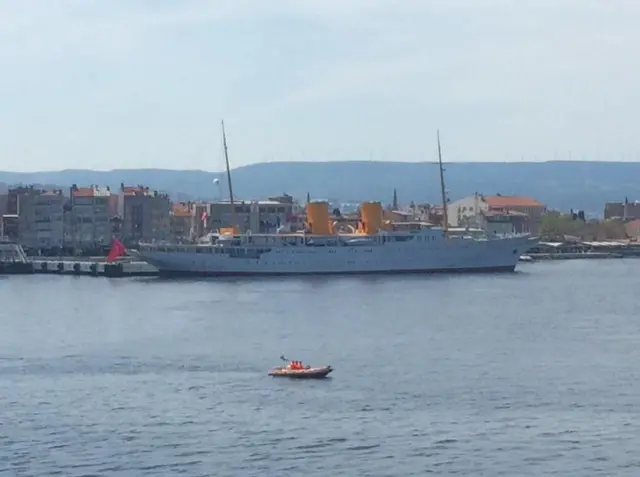
Clarence House
tweets, external: The Prince of Wales meets descendants of those who fought in the #Gallipoli campaign on HMS Bulwark
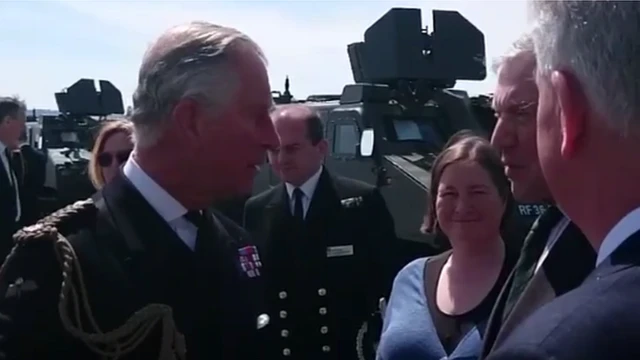 Image source, Clarence House
Image source, Clarence House 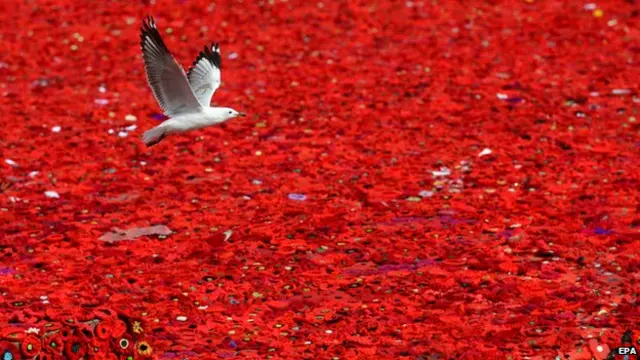 Image source, EPA
Image source, EPAIn Melbourne, 5,000 poppies have been laid in Federation Square as part of the commemorations.
Gallipoli was the first campaign Australia and New Zealand fought as independent nations.
Some 10,000 Anzacs - members of the Australian and New Zealand Army Corps - died, while 23,000 were injured, having a devastating impact on the male population of the fledgling nations.
Anzac Day is widely marked each year in both countries on 25 April, the day the Allied troops landed on the Turkish peninsular.
Royal Navy
@RoyalNavy tweets, external: Lone Bugler from Royal Marines School of Music plays #LastPost to commemorate #Gallipoli100 youtu.be/xL_9HqjTpJA, external via @YouTube
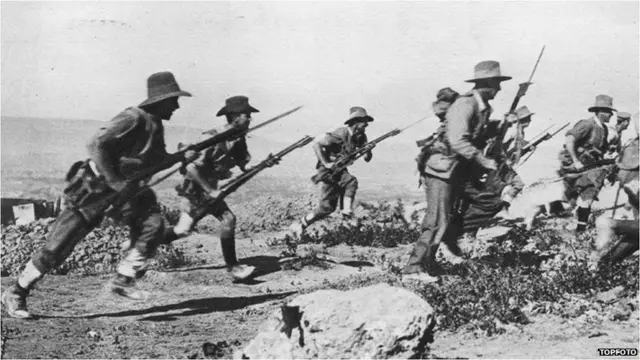 Image source, Topfoto
Image source, TopfotoAustralian troops charge at Gallipoli
The Gallipoli campaign was an ambitious military operation in World War One to knock the Ottoman Empire out of the war.
The British and French-led force planned to seize the capital Constantinople (now Istanbul) by launching a land and sea assault from the Turkish Gallipoli peninsula.
They planned to advance 200 miles north east to the capital but only succeeded in establishing a tiny foothold at Gallipoli.
Mark Lowen
BBC Turkey correspondent
tweets, external: #HMSBulwark in sight, here for #Gallipoli100, soon sent off for migrant rescue operations in Mediterranean
